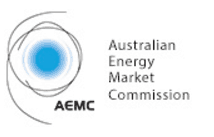Australian solar subsidies are expected to cost $1.3b in 2018 as the Clean Energy Regulator estimate that 22 million small-scale technology certificates will be created. This will add approximately $100 to the average Australian solar bill. At what point, if at all, do we look at reining these subsidies in?
Australian solar subsidies

The small-scale technology certificates (STCs) are given to people installing solar panels, and electricity retailers are required to buy them. So although this expected $1.3b will ostensibly be paid by the energy retailers, naturally the cost is passed on to the end user – resulting in even higher electricity bills.
Jeff Bye from Demand Manager in Sydney, a company that trades STCs, was quoted in the Australian as saying this years cost increase means an average electricity bill will raise by around $100:
“The cost increase (this year) is about $800m and there are 8 million households … so there’ll be a cost impact of around $100 per household. The electricity impact might be $40 or $50 per household but businesses will pass through the additional cost too … That subsidy of $500m last year, or $1.2bn to $1.3bn this year, is added on to everyone’s bills.”
Is it time to abolish the solar subsidies?
Is this fair for renters or apartment dwellers (a rapidly increasing segment of the population)? At what point do we start to reconsider these subsidies?
With the price of solar + storage driving down as the technology gets better and better, there’s certainly going to be a ‘tipping point’ where the market can stand on its own two feet. But with Australian solar growing at an astronomical pace it’ll be difficult to find the right time/method to adjust these subsidies.
According to Energy Minister Josh Frydenberg, the Australian Energy Market Commission found the average cost to households over the past five years was about $29 a year.
“The AEMC forecasts residential electricity prices will fall over the next two years as renewable energy, including small-scale solar supported by the Renewable Energy Target, enters the system,” Mr Frydenberg said. So potentially some of that $100 will be offset by lower prices from the energy retailers.
His political opponents were a little less hopeful – as backbencher and former PM Tony Abbott fired back after hearing the statistics, saying:
“Australians are paying far too much for our emissions obsession. Government must end subsidies for new renewables,”
Liberal MP Craig Kelly, Chair of the Coalition’s Backbench Energy and Environment Committee, told Chris Smith on 4BC his thoughts on the scheme:
“All these schemes have done is make electricity prices dearer for every single Australian.”
Whilst those quotes can certainly be taken with more than a grain of salt given the abysmal state of Australian politics, it’s definitely worth having a look at these subsidies against the cost of solar, its level of technological maturity, and schemes to help low income earners, renters, and apartment dwellers benefit from renewable energy as well.




